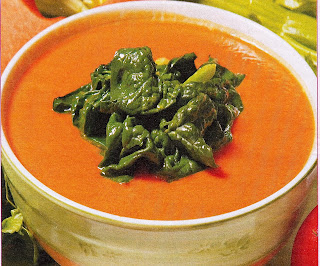A colorful, balanced diet is associated with good health.
So what does color have to do with diet anyway? According to the American Institute for Cancer Research, deeply colored vegetables -- whether green, yellow, orange, or red -- and dark leafy greens offer the most protective health benefits against cancer and other diseases.
The more brightly colored the vegetable, the more protective the health benefits, thanks to a rich assortment of plant compounds called phytochemicals.
Fruits should also be an important part of our overall healthy eating plan. Dr. David L. Katz, director of the Yale University Prevention Research Center, said that “to maximize the benefit, you actually want a variety” of fruits. He advises “eating the rainbow,” since different colors signal different types of antioxidants and nutrients.
 |
| Vegetables from our garden |
So what does color have to do with diet anyway? According to the American Institute for Cancer Research, deeply colored vegetables -- whether green, yellow, orange, or red -- and dark leafy greens offer the most protective health benefits against cancer and other diseases.
The more brightly colored the vegetable, the more protective the health benefits, thanks to a rich assortment of plant compounds called phytochemicals.
Fruits should also be an important part of our overall healthy eating plan. Dr. David L. Katz, director of the Yale University Prevention Research Center, said that “to maximize the benefit, you actually want a variety” of fruits. He advises “eating the rainbow,” since different colors signal different types of antioxidants and nutrients.
I challenge myself daily to keep my dishes colorful.
 |
| Fried peppers |
 |
| Spinach and brown rice |
 |
| Sauteed mushrooms |
 |
| Cream of squash soup |
 |
| Zucchini, potatoes and eggplant casserole |

No comments:
Post a Comment